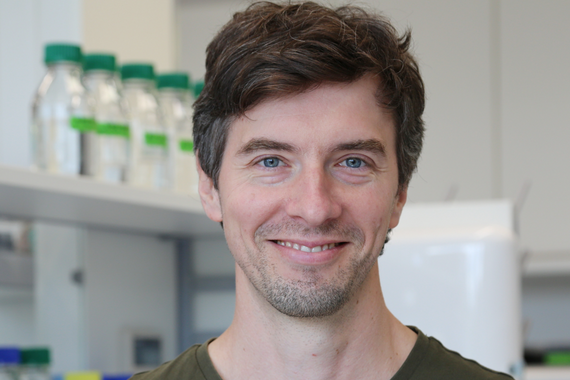-
Die Universität
- Herzlich willkommen
- Das sind wir
- Medien & PR
-
Studium
- Allgemein
- Studienangebot
- Campusleben
-
Forschung
- Profil
- Infrastruktur
- Kooperationen
- Services
-
Karriere
- Arbeitgeberin Med Uni Graz
- Potenziale
- Arbeitsumfeld
- Offene Stellen
-
Diagnostik
- Patient*innen
- Zuweiser*innen
-
Gesundheitsthemen
- Gesundheitsinfrastruktur
Photobiochemistry
The ability to perceive and integrate environmental stimuli is essential for all living organisms. One important ambient factor is light that is sensed by a variety of photoreceptors. Many light-responsive proteins are directly connected to enzymatic functionalities and enable photo-activation or -inhibition of various cellular processes. Recently, the interest in light-triggered systems has increased significantly due to the establishment of ‘optogenetics’, which refers to the concept of genetically targeting biological systems to enable optical control of diverse processes. However, the growing demand for light controlled systems goes beyond the possibilities of naturally occurring photoreceptors. Even though substantial progress has been made in understanding the concepts of light activation in several photoreceptor families, the rational design of synthetic tools is not straightforward. Since mechanistic descriptions of signal transduction to effector domains differ even within photoreceptor families, it is obvious that a more detailed understanding of the underlying principles of sensor-effector coupling is required.
One area of research are blue- and red-light activatable guanylate and adenylate cyclases, respectively. These represent artificial light-regulatable tools that are designed based on previous functional data of a blue-light regulatable adenylate cyclase and the evolutionary conservation of elements required for signal transduction. The identification of specific signaling elements for the closely related effector systems and the comparison of functionalities of different artificial chimeras will provide new insight into the coupling mechanism of sensor-effector modules. A successful characterization of these systems requires an interdisciplinary approach combining biochemistry with tools of structural biology. Atomic models obtained from x-ray crystallography will be functionally extended by the in-solution method hydrogen-deuterium exchange (HDX-MS) to obtain structural information of elements that are involved in photo-activation and signal transmission.
Principle investigator
Assist. Prof. Dr.
Andreas Winkler
Andreas Winkler
Institute of Biochemistry, Graz University of Technology
T: +43 316 873 6457



